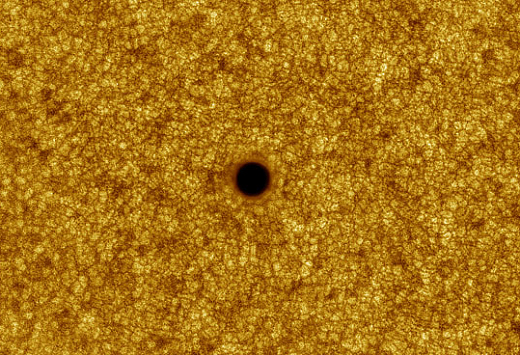Millions of people on Earth witnessed the transit of Mercury yesterday when the tiny black form of the first planet crossed the face of the sun.
Source: SpaceWeather.com
The best views were out of this world–literally. More than 22,000 miles above Earth’s surface, NASA’s Solar Dynamics Observatory (SDO) recorded an incredible movie of the transit.
This movie is unlike any recorded on Earth. High above our planet’s atmosphere, extreme ultraviolet telescopes onboard SDO were able to see Mercury making first contact with the sun’s outer atmosphere, the corona. The wavelengths required to gain this view are blocked by air and only visible from space.
While SDO observed the transit from Earth orbit, another spacecraft joined the show in a different way. The Hubble Space Telescope transited the sun alongside Mercury. Thierry Legault captured the rare double transit from the Atacama Desert of Chile:

“I set up my telescope in Machuca (north of San Pedro de Atacama) 4000 m above sea level near a lagoon where flamingo colonies frolic,” says Legault. “Hubble was flying at 26,500 km/h, and it crossed the disk of the sun in only 0.9 seconds–so timing was crucial.”
In 2016, Legault photographed a simultaneous transit of Mercury and the International Space Station (ISS). “I decided to try something harder this time, something that had never been done,” he says. “I did it despite a thick layer of high clouds causing a huge diffusion of sunlight and a sharp drop in contrast.”
Astrophotographer Martin Wise captured his own out-of-this-world shot without leaving his home in Trenton, Florida:

“The silhouette of Mercury looked like a hole punched in the surface of the boiling sun,” he says. “The resolution of this image is 0.3 arcseconds per pixel, high enough to see solar granulation.”
Source: SpaceWeather.com

































Leave a Comment
You must be logged in to post a comment.